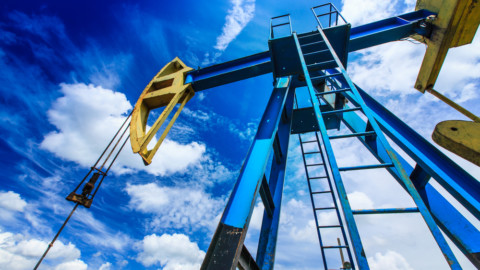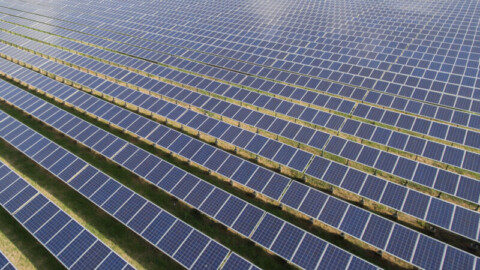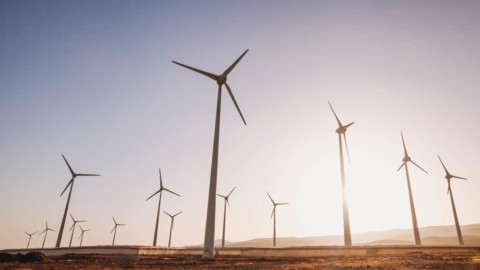Western Australia’s state-owned coal-fired power stations will be retired by 2030 in response to the continued uptake of rooftop solar and renewables.
Collie Power Station will close in late-2027 and Muja D in late-2029. Muja C’s Unit 5 will close in late-2022 and Unit 6 in 2024.
The Western Australia Government said the state’s electricity system is being increasingly challenged by the overwhelming uptake of rooftop solar.
These pressures force Synergy to offload excess power generated during the day at a loss, and add additional maintenance and generation costs, which are ultimately borne by taxpayers.
Without the decision to retire the power stations, over the next decade Western Australia would either see major electricity price hikes or taxpayers would be forced to fund billions of dollars of subsidies to keep the system running.
Under current settings, it is estimated household electricity costs would rise from their current average rate of about $1,800 per year to more than $3,000 per year.
Alternatively, Western Australian taxpayers would be required to subsidise Synergy to the tune of almost $3 billion to 2029-30 to cover the ongoing losses of the energy provider, taking funding away from key government projects and services.
The investment in new renewable power infrastructure is expected to pay for itself by 2030-31 relative to the increasing electricity subsidies payable under the status quo.
Rooftop solar causing system instability
Western Australian Premier, Mark McGowan, said the reality is that the state’s current electricity system is becoming increasingly unsustainable due to the uptake of rooftop solar and growing demand for renewable options for generation.
“Maintaining the status quo would see average yearly household power bills increase by over $1,200 within eight years,” Mr McGowan said.
“Alternatively, taxpayers would have to spend billions subsidising the system, taking funding away from key government projects and services.
Western Australian Energy Minister, Bill Johnston, said the amount of rooftop solar coming online currently in Western Australia is roughly the equivalent of adding a new coal-fired generation unit every year.
“This is putting unprecedented pressure on the system and we must act to keep costs as low as possible, while transitioning to higher levels of renewables and storage,” Mr Johnston said.
“Our new investment in the South West Interconnected System represents an extraordinary investment in the future of our electricity system, including a massive reduction of Synergy’s carbon emissions.
“We will be working closely with impacted businesses, workers and communities to ensure we create new jobs and training opportunities to future proof Collie for the coming decades.”
Helping the transition to renewable energy
The transition to higher levels of renewables and storage will happen in a sensible, orderly, consultative manner to ensure workers, industry and communities are strongly supported.
An estimated $3.8 billion will be invested in new green power infrastructure in the South West Interconnected System (SWIS) – including wind generation and storage – to ensure continued supply stability and affordability.
This will be the largest infrastructure program in Western Australia since METRONET, and will set the State up for a reliable, affordable, renewable energy future – while creating thousands of jobs in regional Western Australia.
Synergy and Water Corporation are currently undertaking analysis to determine the feasibility of a pumped hydro project forming part of its storage needs.
Synergy is also investigating the feasibility of using hydrogen to power its existing gas generation assets.
As part of these changes, the State Government has also committed to not commissioning any new natural gas-fired power stations on the SWIS after 2030.
The Western Australian Government remains committed to its domestic gas reservation policy, which reserves 15 per cent of natural gas – which would otherwise be exported – for the Western Australian market.
By phasing out coal-fired power, Synergy’s carbon emissions will be reduced by 80 per cent by 2030, including a 40 per cent emissions reduction on the SWIS, compared to 2020-21 levels.
It is expected that additional industry demand for renewable energy will result in even greater emissions reductions on the SWIS.
The State Government is committed to working with coal providers to ensure security of supply through to 2030, and an orderly transition for industry, including entities that use coal in their technical processes.
The State Government will also continue its work with the Collie Just Transition Working Group to implement job-creating initiatives to ensure the town has a strong future.
“The transition will be implemented in a sensible, consultative manner, with long lead times to ensure workers and the wider community can plan for the future,” Mr McGowan said.
“These initiatives will create new local industrial and blue collar jobs to make sure the local workforce has the opportunity to transition into new, high quality roles in the Collie area.”
$662 million boost for Collie
A new $547.4 million Collie Transition Package will support the town of Collie over the next decade, to grow new industries and local jobs – bringing the Western Australian Government’s investment in the area to over $662 million.
The Collie Transition Package includes a new $200 million Collie Industrial Transition Fund, expanded skills and training opportunities for workers and additional job-creating investment.
It will provide funding to enhance industrial land readiness and support new and emerging industries – including potential opportunities in battery manufacturing, wind turbine manufacturing, hydrogen, green cement and minerals processing.
In order to support and transition the affected blue collar workforce, the state Government will undertake orderly and coordinated decommissioning works of Muja Power Station and Collie Power Station immediately after each asset closes.
An additional $21 million will go to expanding the Collie Jobs and Skills Centre and provide free skills assessments and training, bringing total investment in this area to $25.9 million, including:
- A one-stop shop in Collie for workforce transition services offering free career, training and employment advice for individuals and businesses
- Fee-free skills assessments and recognition of prior learning to utilise workers’ existing skills and knowledge to get a formal qualification, and identify any skills gaps
- Free training for impacted workers who wish to undertake either a full qualification or a short course
- New onsite training facilities co-located with local power stations or mines
- A new Collie Futures Curriculum Fund, developing industry-specific skills training
- Assistance connecting jobseekers with employment opportunities and helping employers attract and recruit employees
“For more than a century Collie has literally powered the state – and the State Government is absolutely committed to ensuring the town has a strong economic and jobs future,” Mr McGowan said.
“This investment makes economic sense, as it pays for itself by 2030-31, instead of continuing to pay increasing subsidies under the status quo.”
The Collie Delivery Unit will receive an additional $4.4 million boost, to enhance its work to coordinate, oversee and promote activities and initiatives that support the future prosperity of Collie.
The Collie Small Grants Program will also receive an additional $2 million to deliver more grants of up to $100,000 to Collie small businesses to help them grow and diversify.
Collie will also benefit from an additional $3.8 billion investment in new renewable power infrastructure around the state, creating additional jobs and opportunities in the region.
This new investment is on top of the more than $115 million the State Government has already invested in Collie to diversify the local economy and secure the town’s future.
AEMO welcomes the closures
AEMO has welcomed the announcement to close the existing fleet of Synergy-owned coal-fired power stations, the Collie Power Station and Muja D Power Station.
AEMO’s Executive General Manager Western Australia and Strategy, Kate Ryan, said AEMO appreciates this early advice from the State Government about the future of Synergy’s coal-fired generators.
“We will continue to work closely with the Western Australian Government, Synergy, and industry to ensure that as existing coal-fired generation is retired, new renewable generation and storage, including the announced wind generation and battery storage investments, are securely and reliably integrated into the SWIS,” Ms Ryan said.
AEMO’s CEO, Daniel Westerman, said, “This announcement will be supported through AEMO’s efforts to engineer grids that can run at times of up to 100 per cent peaks of instantaneous renewable generation by 2025, with renewables already providing periods of up to 78.6 per cent instantaneous penetration in the SWIS”.
AEMO said it will continue working collaboratively with the government and industry to ensure Western Australian households and businesses are the beneficiaries of secure, reliable, affordable and sustainable energy.
















